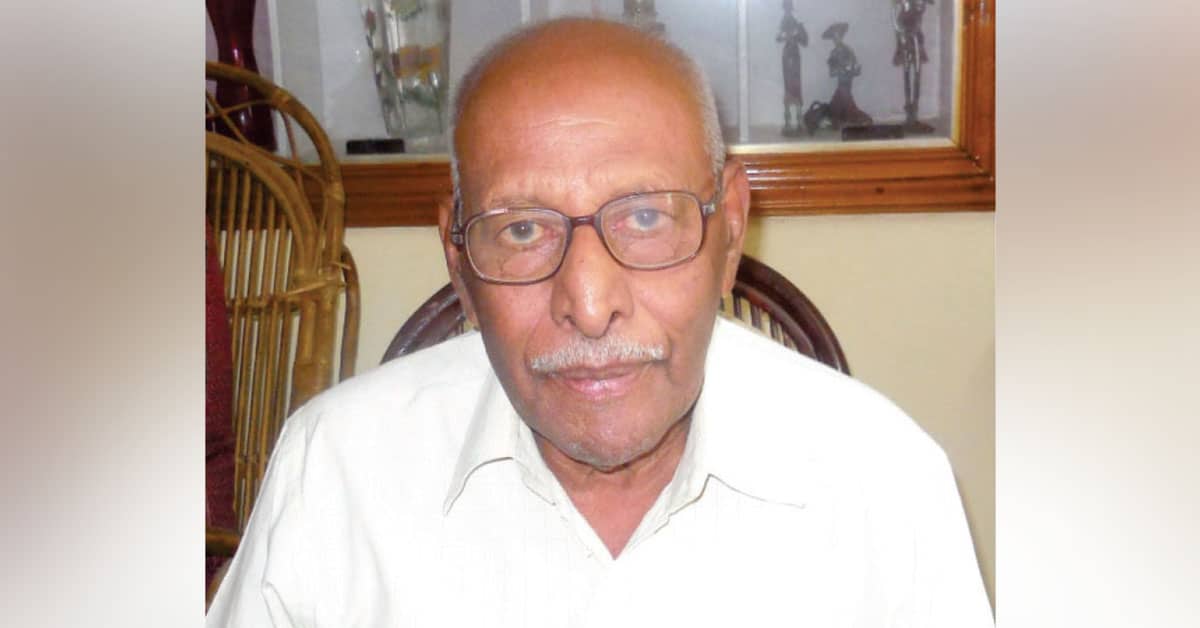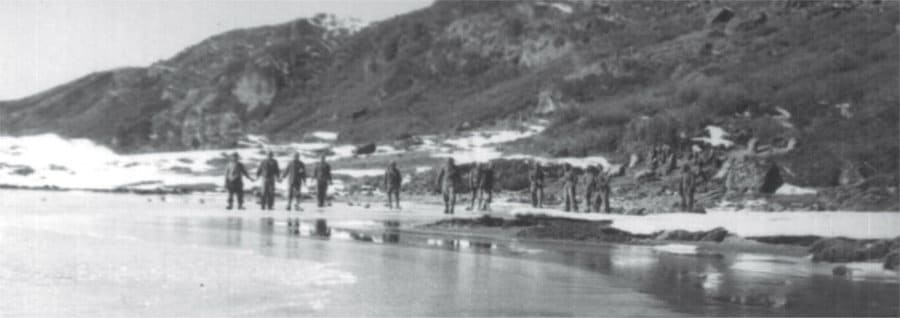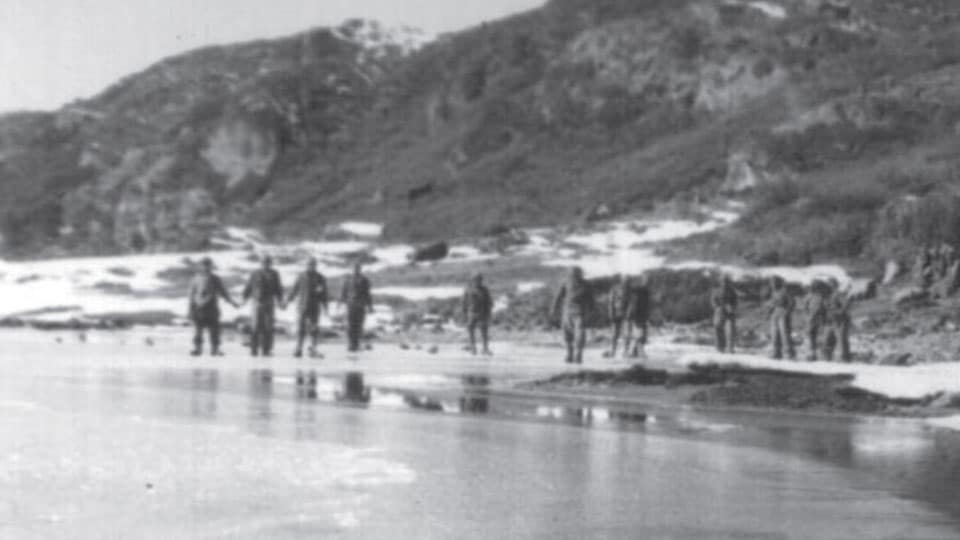While it is common for Kodagu youth to join the Armed Forces and dedicate their lives for their Nation, ready to make the supreme sacrifice, there are some sons of the soil who have earned name and fame through their service in the Survey Department. One such hero is Kalyatanda B. Appachu, son of late Kalyatanda A. Belliappa. Born on 24.6.1935 in Virajpet town, Kodagu District — when it was a ‘C’ State — Appachu retired as Superintending Surveyor, Survey of India, after a long, challenging and fruitful innings.
In this interview to Star of Mysore, he shares his experiences in the Indo-China border at a time when India had to face Chinese aggression and lose many precious lives due to the wrong policies of our then leaders. Excerpts.

K.B. Appachu
SOM: Any bitter experience that haunts you?
Appachu: At the base camp, we took rest for 3 days. After some time we found that one porter was missing. In order to bring instruments we had left behind as well as to search that missing porter, we began tracking back again and on reaching the spot where we had crossed the stream, we could see some footprints deviated towards a small cave. We went there and could find the missing porter lying inside the cave. He was dead. All of us passed mud to cover the body. Then we went to the previous camp where we had left the instruments, collected them and returned to our base camp.
Meanwhile another team which had gone to other peak started returning. On their way, they were thrown down by an avalanche and all escaped except for one peon Rameshwar. He was carrying the instrument on his back and was buried deep in snow due to weight. Our search party could not find him but next the summer, an Assam Rifles search party could find his dead body and performed the last rites. After this bitter experience of exploratory survey, all of us returned to the party headquarters in Shillong.
SOM: Any incident you still regret?
Appachu: In 1966-67 Sultan Batheri (Karnataka-Kerala border), I was asked to carry out Model Control work for photogrammetric work for the Defence Department around Ooty area. Before proceeding for field work, when I was in the party HQ in Bangalore, I got an intimation from Survey General’s Office, Dehra Dun that I had been awarded Silver Medal by the Governor of Assam for meritorious service in NEFA. It was communicated to me orally by my Officer In-charge. I was asked to go to Shillong to receive the award on Republic Day in 1967 from the Governor of Assam. I was very keen to go but my Officer In-charge told me that they cannot send me as I was doing a top priority work for Defence. No matter how much I pleaded, the final reply was ‘No’.
I still regret that I could not receive the award in person. However, the medal and the citation were sent to me later.
SOM: How was the survey work at Sultan Batheri? Any incident you want to recall?
Appachu: One day we were to go to the top of a hill in an area that was infested by wild elephants. I took one of the mahouts from the camp as he knew how to scare elephants. On the way he sensed the presence of elephants as we could see freshly cut plants. As we neared an uneven area, suddenly one wild elephant ran towards us trumpeting and kicking up dust. I wanted to follow the mahout but he suddenly, like a monkey, climbed a tree and I saw the elephant approaching me. I started running fast but from the opposite direction I saw three more elephants running towards me. I lost my senses and when I regained composure, I found I had climbed a tree. Due to reflex action, I had run about 10-12 meters inside the forest and climbed up a tree.
This incident happened at about 9am and by about 11am there were about 3-4 elephants gathered at the spot. It was a mother elephant with her baby and mother elephants are normally more ferocious than a rouge elephant. By about 1 pm due to hot sun, the elephants walked away. All the people who had climbed trees got down. Thank God, all were safe.
Cautiously we collected the equipment and returned to our camp. We were in no mood to eat or even to talk. I informed my officer about the incident and after two days he came down to Ooty and conducted an enquiry. He said I should have taken more precautions by taking Police escort to the area of work. I told him that it was not possible to go to Police station daily as it was far away. Then I told him that I was not scared of elephants and if he sends me the blueprint of the area I would complete the work. He went back to Bangalore and sent the blue print and equipment. I worked hard for two months and completed the assignment successfully despite encountering wild elephants twice.

A human chain on ice slate lake to save oneself if the ice cracks due to weight
What is McMahon Line?
McMahon Line is a line proposed by McMahon in the Simla Accord which was considered invalid by both Tibetans and Chinese government. It is the effective boundary between China and India although its legal status is disputed by the Chinese.
The line is named after Sir Henry McMahon, foreign secretary of the British-run Government of India and the chief negotiator of the convention at Simla. It extends for 550 miles (890 km) from Bhutan in the west to 160 miles (260 km) east of the great bend of the Brahmaputra River in the east, largely along the crest of the Himalayas. Simla (along with the McMahon Line) was initially rejected by the Government of India as incompatible with the 1907 Anglo-Russian Convention. This convention was denounced in 1921. After Simla, the McMahon Line was forgotten until 1935, when British civil service officer Olaf Caroe convinced the government to publish the Simla Convention and use the McMahon Line on official maps.
The McMahon Line is regarded by India as the legal national border. It is disputed by China. As recently as 2003, the Dalai Lama said that the disputed region was part of Tibet, in 2008, he said that “Arunachal Pradesh was a part of India under the agreement signed by Tibetan and British representatives.”
Rice with elephant urine !
Early in 1965, the Survey Department had recruited a few trainees and I was given the responsibility of training them in all aspects of topographical survey. In the field, I was designated as the Camp Officer and we established our camp at Changlang in the foothills of NEFA.
One incident comes to my mind here. At the base of the hill top, we had pitched the tent just to spend the night. Our people took water from a ditch and cooked rice and my cook served it to me. The moment I put it into my mouth, I had widespread burning sensation and I vomited the rice. I washed my mouth with bottled water and slept off. At night an elephant had passed by the side of our tent but caused us no harm. The next day morning when we checked the so called water in the ditch, we found that it was actually elephant’s urine! And without realising it, the cook had prepared rice out of it.
AWARDS AND RECOGNITIONS
- Honorarium received from Survey of India.
- Commendation Certificate received from the Governor of Assam for meritorious service in NEFA (North East Frontier Agency), now Arunachal Pradesh.
- Silver Medal received from the Governor of Assam for meritorious service for 5 years in NEFA.
- Appreciation letter from the Government of India, Ministry of External Affairs in recognition of meritorious services in the Indo-Pakistan boundary demarcation in Kutch in Gujarat.
- A memento – Gold-coated replica of Pashupathinath Temple was presented by trainees and staff of Survey Training Centre, Kathmandu,Nepal.
- Lifetime Achievement Award presented by the association of Engineering and Surveying Consultants for exceptional contribution in the field of surveying.
[Concluded]








ONE COMMENT ON THIS POST To “Son of Kodagu leaves his footprint on snow-clad mountains -3”